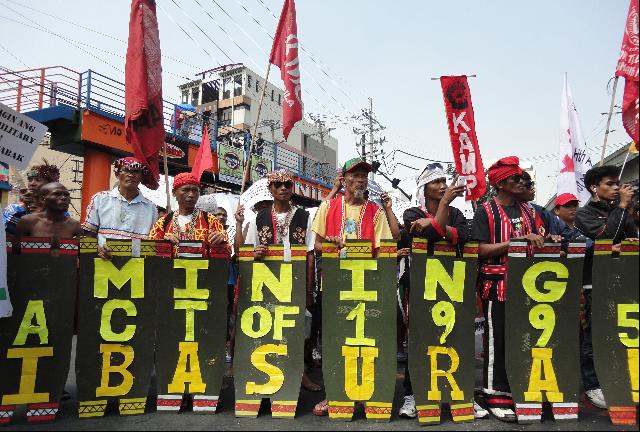The Philippines holds the world’s second largest gold reserves, and applications from foreign mining firms are piling up to tap that plus a list of other metals that basically just sit under the ground now.
Mining made up just 0.72 of the impoverished Southeast Asian country’s economy in 2012 as gold production fell back 50% to 15,762 tons that year, Forbes reported.
Access to the $1.4 trillion Philippine mining sector, rich also in copper and nickel, has been mired since the 1980s in klutzy laws, environmental battles and land rights issues. It may be on its way out of the pit this year.
Officials in Manila see mining as an untapped treasure that could help sustain recent annual economic growth of about 6% and bring in foreign investment – a national priority since 2010. It’s one of the country’s next boom sectors, forecasts Jonathan Ravelas, chief market strategist with Banco de Oro UniBank in metro Manila.
The government wants more foreign investment in mining, in turn adding to some 250,000 jobs offered by the industry. Officials in Manila also insist on getting a bigger share of revenues from the nation’s treasures before they go offshore. That’s why Executive Order 79, signed in 2012 and now pending Congressional approval, may lead to an excise tax of 10% on gross sales of minerals, replacing two smaller taxes today.
Copper, Gold Mining Project
South Cotabato province in Mindanao bans open-pit mining, cramping a $5.9 billion copper and gold mining project.
Also in the legal department, the government’s Mines and Geosciences Bureau intends to stop permit speculation, meaning more of the 700-some permits out there now would be used for extraction rather than sold onward for a higher price and deterring foreign investors who need a geographically unified cluster of go-aheads to do work on a profitable scale.
Foreign companies active in the country’s 35 commercial-scale mines feature Australian-based OceanaGold, which employees 1,800 people to extracts copper and gold from the Didipio Mine on Luzon Island north of Manila. It began commercial mining two years ago and expects production of 100,000 ounces of gold and 14,000 tons of copper over 16 years. Also on Luzon Island, UK-based Metals Exploration has owned the Runruno Gold-Molybdenum Project since 2005 with a defined mineral resource of 1.39 million ounces of gold. Local company Philex Mining is particularly aggressive in Mindanao, and Forbes called it one of Asia’s best firms under a billion in 2012.


